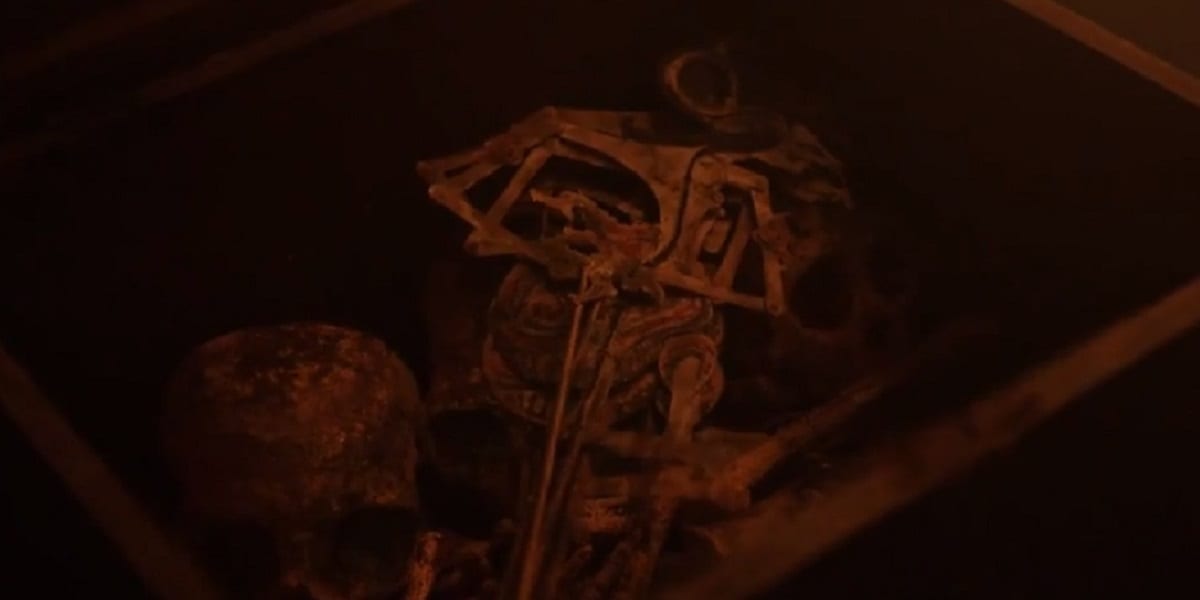Following his international horror hit Satan’s Slaves (2017), Indonesian horror director Joko Anwar’s supernatural mystery film Impetigore (2019) is guaranteed to reel in horror lovers when it debuts on Shudder. Impetigore (original title Perempuan Tanah Jahanam) artfully balances its abrupt and unexpected stomach-churning gore with a carefully-constructed narrative. Anwar lures you into his inconceivable plot, much in the way that the film’s protagonist Maya (Tara Basro) is lured to witness the atrocities taking place in her remote, cursed village of birth. Beyond its visual and conventional excellence, this gruesome story of Harjosari Village in Mandiraja is invested with the exhibition of an ancient Javanese art form and with commentary on the struggle for women’s rights in Indonesia.

At the outset of the film, Maya and her close friend Dini (Marissa Anita) have little opportunities and little independence, and they are one another’s only refuge. Impetigore begins with them working as toll-booth operators. They hold a conversation covertly on their personal phones as they mechanically collect fees, and their mobility is visibly restricted in the cage-like booths. This impression of restriction is only heightened when Maya struggles to escape the booth as a passenger who has been stalking her approaches her booth and attacks her. Although the grisly attacker has targeted Maya because of her connection to the Harjosari curse, the scene gives us a visceral sense of her vulnerability to sexual assault in this occupation.

Maya and Dini speak openly about their inability to enjoy personal freedoms. For instance, Maya is accused of prostitution if she walks home late. They are at first stuck working a low-wage job as toll-booth operators, and then their dream of launching a clothing store turns out to be a small game hustle run out of a storage unit—in other words, a bust. As Maya and Dini exhaust their possibilities for independence in the city, Maya probes her unknown, orphan past in a remote village for an opportunity. The only link she has to her parents and to Harjosari Village is a photograph, and in that photograph is a house of ample size. She shares her plan with Dini: find the village, claim the house, and get rich quick. Simple, right?
Maya shares the basics of her plan with Dini, but she conceals her hazy knowledge of the accursed environment that awaits them in Harjosari Village. Most peculiarly, Maya doesn’t tell Dini about the tiny scroll with an ancient spell that she extracts from the mysterious wound in her inner thigh that her toll-booth attacker noticed and reopened. Dini is Maya’s source of solace and security, but Maya’s withholding of information indirectly causes Dini’s death early in the film. Maya is at first undaunted in seeking out information about her foreboding past, but the violent severance of her relationship with Dini plunges her into desperation.
Traveling to Harjosari Village is like traveling into the past for Maya and Dini. The trip requires a six-hour bus-ride out of the city, then a horse and carriage escort along an unpaved road into the village, which few people have heard of. The village doesn’t have modern plumbing or electricity, and the use of oil lanterns and hand water pumps is emphasized throughout the film. The village is not very populated, and there are no babies or children…but there are lots of hugely pregnant women. All of the villagers regard Maya and Dini with hostile suspicion. And we thought their life in the city was stifling!
They recognize that Maya’s family home—by far the largest dwelling in the village—is lying vacant and dormant. Maya breaks the chains placed on the doors, and they set up camp in the house as they begin to uncover some of its secrets. It is at this point that both the sullen dwellers of the village and the forsaken spirits that haunt the house begin to fixate on Maya and Dini. When they first arrive, Maya and Dini’s plan is to retrieve Maya’s inheritance from the village elder and puppet master, Ki Saptadi (Ario Bayu). As you may suspect, things don’t shake out as planned.

You may also be wondering—wait, the village elder is a puppet master? Yes. And this is where Impetigore’s unique cultural relevance begins to stand out. The Javanese art form known as wayang is an ancient and extremely influential version of shadow puppet theatre. In particular, wayang kulit is the oldest, most traditional version of wayang figures. Wayang kulit are spindly, two-dimensional puppets that are ornately decorated and constructed using perforated leather. For centuries, wayang has dramatized mythological Hindu epics, and wayang practitioners are regarded as keepers of wisdom and as leaders in their community. Except in Impetigore, Ki Saptadi’s leadership is conceived in wickedness and his puppets are made from the flesh of children.
Overall, the horror of Impetigore is rooted in the victimization of women and children. In fact, depictions of violence against children in this film, while not fetishized or overdone, are almost intolerable. There is not a single sympathetic male character to be found in the city or in the village, and even male characters who are marginally sympathetic are eventually traitorous. Dini’s cruel fate is the earliest example of brutal female victimization in the film. The mystery of the frightful ghost children, once revealed, exemplifies the treacherous exploitation of children, and the multitude of pregnant women whose babies are not allowed to live intensifies the focus on this type of victimization.
The two most active characters in Impetigore, Maya and Nyi Misni (Christine Hakim)—the protagonist and the antagonist, respectively—are also defined by their victimization. Nyi Misni is Ki Saptadi’s mother, and she is easily recognizable as the film’s primary villain even before her involvement is revealed near the end of the film. She is secretly the originator of the horrific curse wrought upon Harjosari, and she is willing to commit ruthless murder to protect this secret. However, in her youth, she was sexually exploited and then discarded by the original puppet master of Harjosari, and this abuse is what engendered her avenging viciousness. Maya survives her trip to Harjosari, if only barely, but she is never permitted to reclaim her heritage. The last time we see her, she is shrieking and wailing, presumably forever scarred by what she endures.

Overall, the violence against, the rage of, and lack of social mobility for women and children depicted in Impetigore shadows the real-life struggle for women’s rights in Indonesia. The prolific and resilient feminist movement of Indonesia is both spurred and challenged by oppressive traditionalism. In Indonesia, teenaged girls are leading a movement to end child marriage, and the government which is influenced by fundamentalist religious groups rejects feminist legislation and is complicit in systemic violence against women.
The theme of violence submerged in a village’s participation in wayang combined with the subtext of injustice and violence enacted against women and children leads me to interpret the film as a commentary on the way that anti-feminism is embedded in Indonesian traditionalism. Whether or not you are as taken with the sociocultural subtext of films as I am, Impetigore will delightfully frighten you with its unexpectedly creepy supernatural elements and its artfully depicted bloodbaths.



